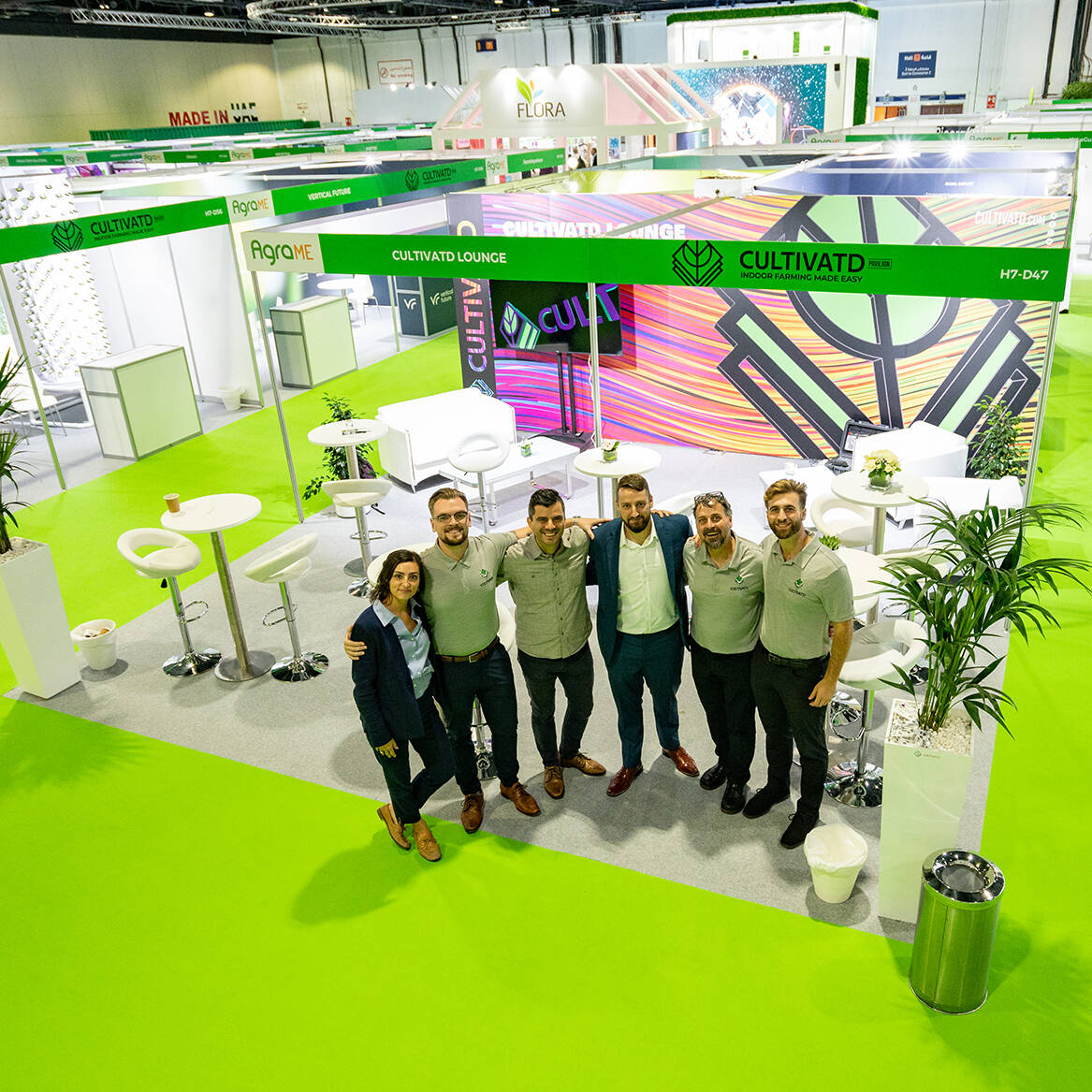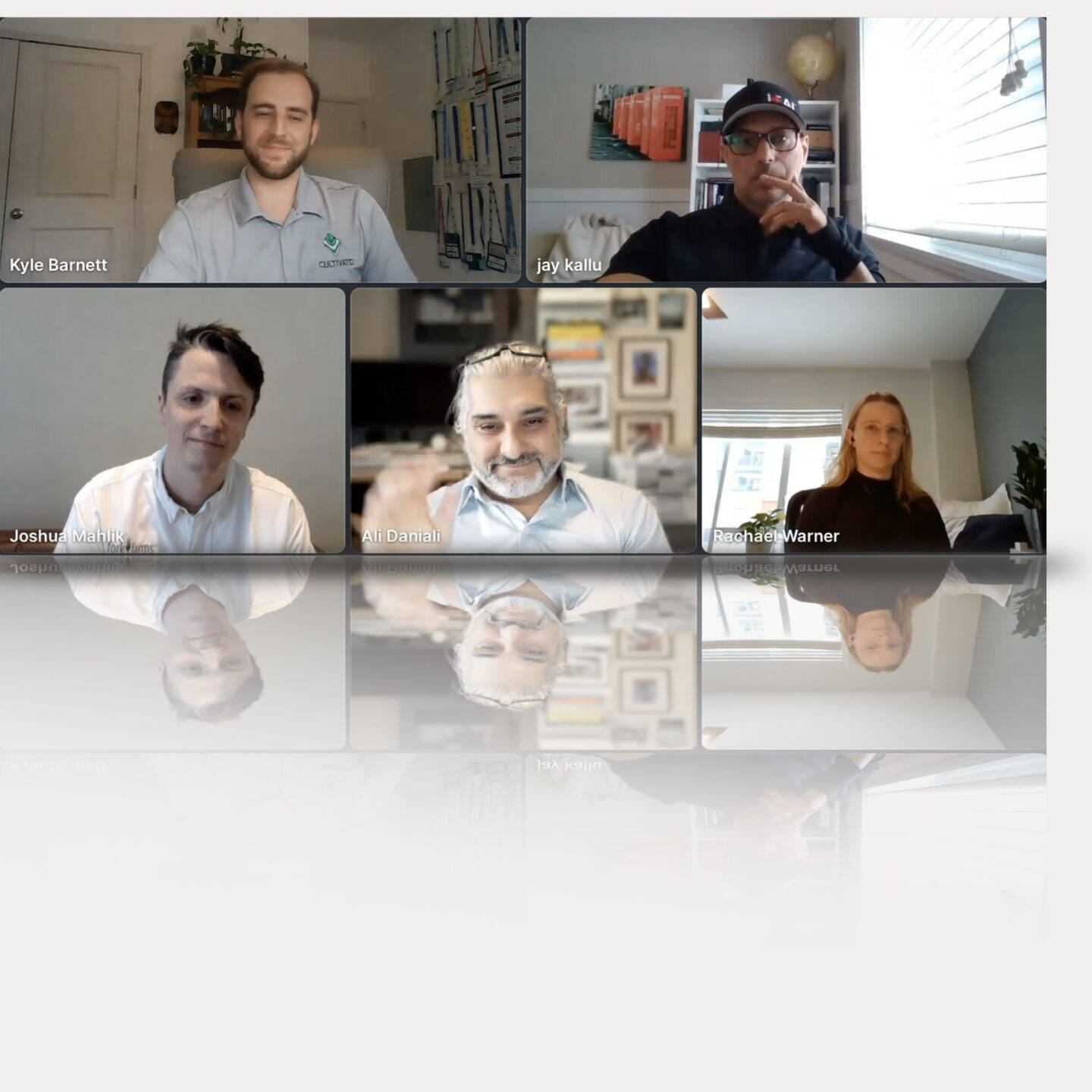WHAT IS VERTICAL FARMING?
Vertical farming is a method of cultivating crops in vertically stacked layers or structures, often soilless, in a climate-controlled environment. This technique optimizes space usage, significantly reduces resource consumption, and enables year-round production. Controlled environments provide the optimal conditions for crop growth, ensuring consistent yields and reduced waste.
Indoor farming makes it possible to grow crops in urban areas, as well as in harsh environments such as deserts, tundras, and even outer space. The freedom to grow anywhere is a game-changer for sustainable agriculture, as it reduces the need for dwindling resources and arable land, and further, growing fresh produce where people live and work eliminating long-distance transportation and food insecurity in areas with limited access to fresh produce.
SUSTAINABILITY
Vertical farming is a sustainable agricultural practice that promotes food security and reduce the carbon footprint of the food industry, as it encourages the production of fresh, locally grown, and nutritious food in urban areas, thereby reducing food waste and emissions from transportation ensuring food supply for generations to come.
RESILIENCE
By reducing reliance on external factors and increasing efficiency the optimal growing conditions for crops, vertical farms can grow crops year-round regardless of external weather conditions. This means that crops can be produced consistently, reducing the impact of climate-related crop failures or disruptions in the supply chain caused by natural disasters or other unexpected events. Additionally, vertical farms use significantly less water and land compared to traditional agriculture, making them more efficient and sustainable.
SELF-RELIANCE
Improve self-reliance in remote and isolated living-conditions or land constrained, densly populated areas.
With the ability to grow your own crops, regardless of weather conditions or geographical location, you secure a reliable supply of fresh, healthy food year-round without relying on external sources or suppliers.
UNLIMITED CANOPY
With the ability to grow crops in stacked layers, vertical farm systems offer practically unlimited canopy options, and customization to maximize the use of all available space, even irregular or unused spaces in existing buildings.
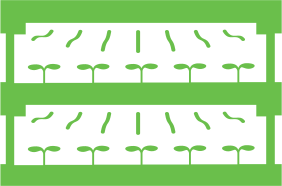
INCREASED CROP YIELD
With vertical farming, crops can be grown in multiple layers, maximizing the use of available space. This vertical arrangement, combined with optimized growing conditions, can lead to higher crop yields per square foot compared to traditional farming methods.
REVENUE
People get into vertical farming for different reasons. Some are passionate about sustainable agriculture and finding new ways to grow food, and for many, making money is the driving-force behind their investment in farming technology and indoor farming ventures. This makes choosing the right equipment, employing the right techniques, and being saavy in your market most important.

Join a community of forward-thinking growers taking control of their harvest! 👨🌾👩🌾

HOW DO CROPS GROW INSIDE?
Crops grown in a controlled environment need the same components they would require to grow outdoors – That is nutrients, light, water, air, and space. Indoor farming allows you to precisely optimize the amount of each, giving your crops consistently better health, yield, taste, and growth cycles.
Feeding Crops
When it comes to nourishing your crops, there are several effective techniques to consider. HYDROPONICS, for example, involves growing plants in nutrient-rich water solutions, while AEROPONICS utilizes a misting system to deliver nutrients directly to the plant roots. AQUAPONICS, on the other hand, combines hydroponics with aquaculture, creating a symbiotic ecosystem where fish waste provides nutrients for the plants. These innovative feeding methods offer precise control and optimal growth conditions for your crops.
Irrigating Crops
Water is essential for plant growth, and efficient irrigation is a key aspect of indoor farming. Automated irrigation systems, such as drip irrigation or nutrient film technique (NFT), ensure precise and controlled water delivery to your crops. These systems, when combined with innovative technologies like nanobubbles, help conserve water, prevent water wastage, and provide optimal hydration to your plants, resulting in healthy growth and higher yields.
Illuminating Your Farm
Proper LIGHTING is crucial for indoor farming, and there are various options to choose from. LED lights provide energy-efficient and customizable lighting solutions, allowing you to adjust the light spectrum for different plant growth stages. High-intensity discharge (HID) lights, such as metal halide (MH) and high-pressure sodium (HPS) lamps, offer powerful illumination and are commonly used in larger-scale indoor farms. Each lighting category has its own advantages and considerations, so selecting the right one depends on your specific needs and crop requirements.
Maintaining the Ideal Environment
Creating and maintaining the ideal environmental conditions within your indoor farm is vital for crop health and productivity. HVAC (Heating, Ventilation, and Air Conditioning) systems play a crucial role in regulating temperature, humidity, and air circulation. With proper HVAC design and controls, you can ensure optimal growing conditions, prevent disease and mold, and maximize your crop yields.
Choosing the Right Growing Media
The choice of growing media significantly impacts plant development and nutrient absorption. Common growing media options include soilless mixes like coco coir, peat moss, or rockwool, which provide excellent moisture retention and aeration for root growth. Each medium has its own characteristics and suitability for different crop types, so it’s important to select the one that aligns with your specific farming goals.
Optimizing these essential components, or “recipes” as it is frequently referred to, will bring harmony to your growing experience.
WHAT PROBLEMS DOES VERTICAL FARMING ADDRESS?
Vertical farming tackles several key issues in agriculture. It solves the problem of limited land by taking advantage of unused space in urban areas. It conserves water through advanced irrigation systems. With farms closer to cities, it reduces food miles, ensuring fresher produce, lower carbon emissions, and less waste.
Vertical farming is the efficient and eco-friendly food production solution the world is counting on to meet the challenges of tomorrow.
WATER USAGE
Vertical farming uses up to 95% less water compared to traditional agriculture, saving thousands of gallons per crop cycle.
CHEMICALS
Vertical farming significantly reduces or eliminates the need for pesticides and herbicides, resulting in pesticide-free produce.
ARABLE LAND
Vertical farming reduces the need for land clearing. Crop cultivation in urban areas and repurposed underutilized spaces, make use of every underutilized space available.
REDUCES FOOD MILES
Vertical farms located near urban centers or remote regions reduce transportation distances, minimizing carbon emissions and food miles by up to 90%.
Locally grown produce significantly reduces your carbon footprint.
REDUCES FOOD WASTE
Vertical farming enables precise control over production, reducing crop spoilage and food waste by up to 50%.
Local supply means less days on the road and less waste... All contributing to a more sustainable food system.
ENERGY EFFICIENCY
Vertical farming utilizes energy-efficient LED lighting and advanced climate control systems, reducing energy consumption by up to 70% compared to traditional farming methods.
Innovation in every component.
HYDROPONICS
Hydroponics is a cultivation technique that involves growing plants without soil, using nutrient-rich water solutions. This method offers precise control over nutrient uptake, resulting in accelerated growth and high yields. Hydroponics is favored for its efficient use of resources and ability to grow crops in limited spaces.
Day-to-Day Operations:
Regular monitoring of pH levels, nutrient concentrations, and water quality is crucial. Planting, transplanting, and maintaining proper lighting and temperature conditions are essential for optimal plant growth and development.
Challenges:
Maintaining nutrient balance, preventing root diseases, and ensuring proper aeration of the root zone are key challenges in hydroponic farming. Strict control over environmental factors, including temperature, humidity, and light, is necessary for consistent crop performance.
Capex:
The capital expenditure for setting up a hydroponic farm varies depending on factors such as system design, infrastructure, nutrient delivery systems, grow media, lighting, and monitoring equipment.
Opex:
Ongoing operational costs for hydroponic farms typically include expenses for water, nutrient solutions, energy consumption (for lighting and pumps), periodic replacement of grow media, and maintenance.
Best-Suited Cultivar Species:
Hydroponics is suitable for a wide range of cultivar species, including leafy greens, herbs, strawberries, and tomatoes.
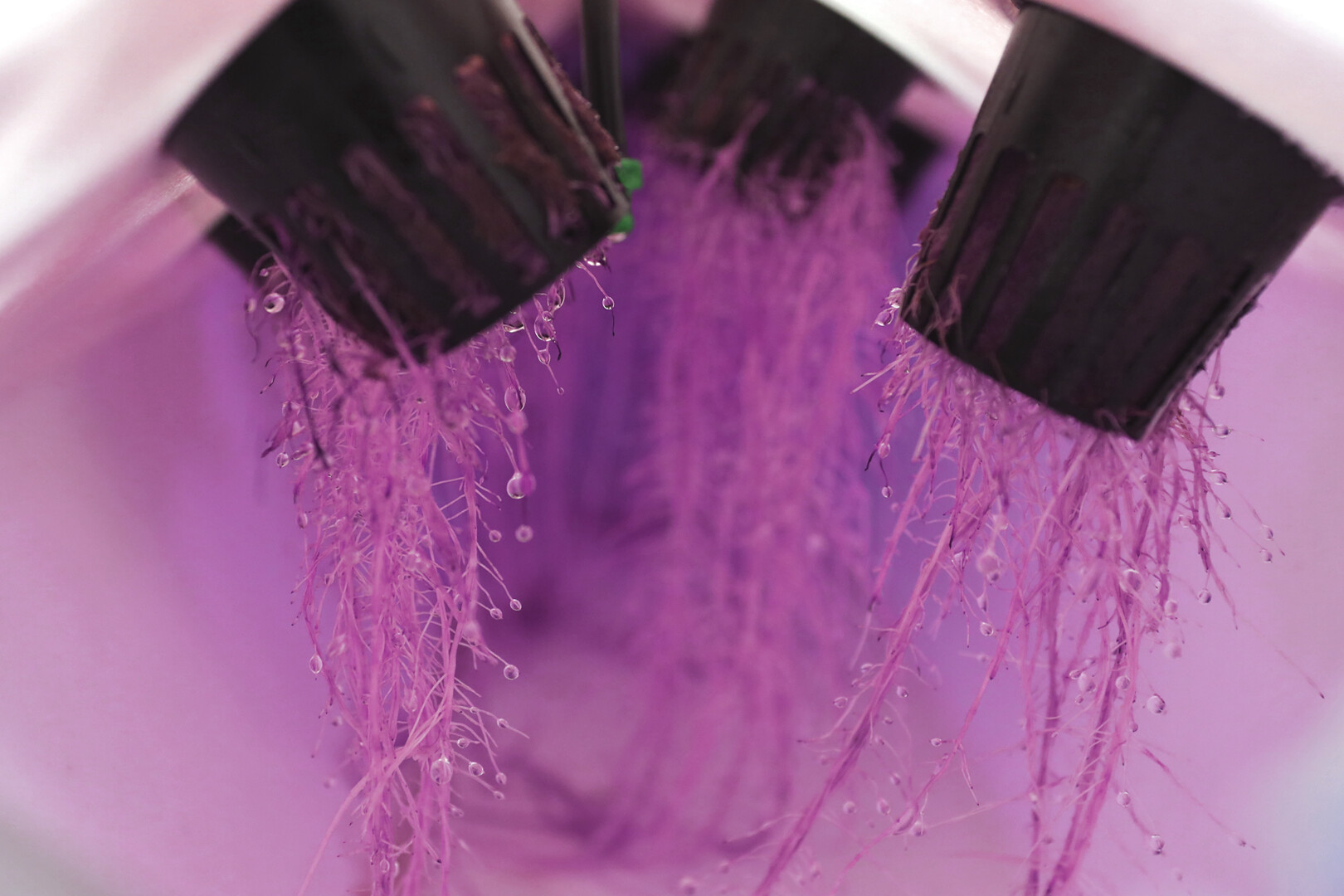

AEROPONICS
In Aeroponic systems, plant roots are suspended in the air and misting them with a nutrient-rich solution. This technique allows for precise control over nutrient delivery and maximizes oxygenation for optimal plant growth and development.
Day-to-Day Operations:
Monitoring and adjustment of misting intervals, nutrient concentrations, and root health are crucial here as well. Regular maintenance of misting systems, filters, and monitoring equipment is necessary to ensure efficient operation.
Challenges:
Maintaining an optimal misting environment, preventing clogging or blockages in misting nozzles, and preventing root diseases are common challenges in aeroponic farming. Adequate control of environmental factors, such as temperature, humidity, and nutrient balance, is essential for successful crop cultivation.
Capex:
The capital expenditure for setting up an aeroponic system depends on factors such as system design, misting equipment, nutrient delivery systems, and monitoring tools. Investments in high-pressure misting pumps, misting chambers, and supporting infrastructure are typically involved.
Opex:
Ongoing operational costs for aeroponic systems include expenses for nutrient solutions, maintenance of misting systems, energy consumption (for pumps and misting), and periodic replacement of misting nozzles and filters.
Best-Suited Cultivar Species:
Aeroponics is well-suited for a variety of cultivar species, including leafy greens, herbs, strawberries, and flowering plants.
AQUAPONICS
Aquaponics is a combination of hydroponics and aquaculture (fish and / or aquatic plant production), creating a system where fish waste provides nutrients for plants, and plants help purify the water for the fish. This method of circular farming is frequently operated inside greenhouses offering a sustainable and integrated approach to growing both fish and crops.
Day-to-Day Operations:
Close monitoring and maintenance of water quality, fish health, and plant nutrition. Regular feeding of fish, managing water parameters, and ensuring proper plant growth are important aspects of aquaponic farming.
Challenges:
Maintaining a balanced ecosystem, managing nutrient levels for both fish and plants, and preventing disease outbreaks in the fish population are key challenges in aquaponic systems. Proper filtration, aeration, and system design are crucial for the overall health and productivity of the system.
Capex:
The capital expenditure for setting up an aquaponic system includes investments in tanks, filtration systems, grow beds, fish rearing infrastructure, and monitoring equipment. The scale and complexity of the system will influence the overall cost.
Opex:
Ongoing operational costs for aquaponics include expenses for fish feed, maintenance of filtration systems, energy consumption (for pumps and lighting), and periodic replacement of filtration media.
Best-Suited Cultivar Species:
Aquaponics can be used to grow a variety of plants, including leafy greens, herbs, tomatoes, cucumbers, and other vegetables. The choice of fish species and plant varieties depends on factors such as water temperature, nutrient requirements, and market demand.
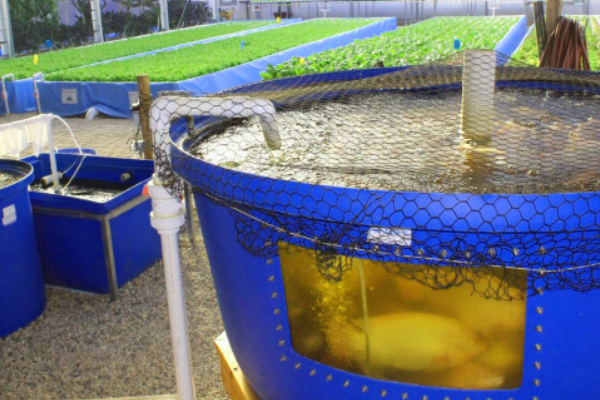

LIGHTING
Proper lighting is crucial for indoor farming, and there are various options to choose from. LED lights provide energy-efficient and customizable lighting solutions, allowing you to adjust the light spectrum for different plant growth stages. High-intensity discharge (HID) lights, such as metal halide (MH) and high-pressure sodium (HPS) lamps, offer powerful illumination and are commonly used in larger-scale indoor farms. Each lighting category has its own advantages and considerations, so selecting the right one depends on your specific needs and crop requirements.
Light-Emitting Diodes (LED) Lighting
Due to their energy efficiency, long lifespan, and ability to provide specific light wavelengths. The latest LED lights can be customized and adjusted with an app to match the ideal spectrum for different plant growth stages.
Fluorescent Lighting
T5 and T8 tubes, are popular for their energy efficiency and versatility. They are suitable for seedlings, young plants, and low-light crops.
High-Intensity Discharge (HID) Lighting
Metal Halide (MH) and High-Pressure Sodium (HPS) bulbs, are known for their high output and intensity. MH bulbs emit a blue spectrum, ideal for vegetative growth, while HPS bulbs emit a red spectrum, suitable for flowering and fruiting stages.
Ceramic Metal Halide (CMH) Lighting
With a combination of MH and HPS technologies, CMH Lights provide a full spectrum of light that closely mimics natural sunlight. They are known for their high efficiency and color rendering capabilities.
Induction Lighting
Known for their long lifespan and low heat emission. They are suitable for areas where maintenance access is limited.
Each lighting category has its advantages and considerations, and the choice depends on factors such as the plant’s growth stage, energy efficiency, cost, and specific requirements of the crop being cultivated.
HVAC
HVAC systems ensure optimal growing conditions for crops – regulating temperature, humidity, and air quality to create a controlled environment. They also facilitate proper air circulation and ventilation, enabling the exchange of gases necessary for photosynthesis.
A turnkey vertical farming system will typically include a built-in HVAC system which simplifies the setup process and ensures efficient environmental control for the specific application.
Purpose-built HVAC systems are designed to handle the requirements of enterprise-scale farm. Beyond the basics, these robust units are tasked with creating and protecting the environment of high-capacity / value growth ventures. Making them unique, is their ability to treat the air as a whole, rather than as separate systems – forcing other components in the system to respond to constantly changing conditions.
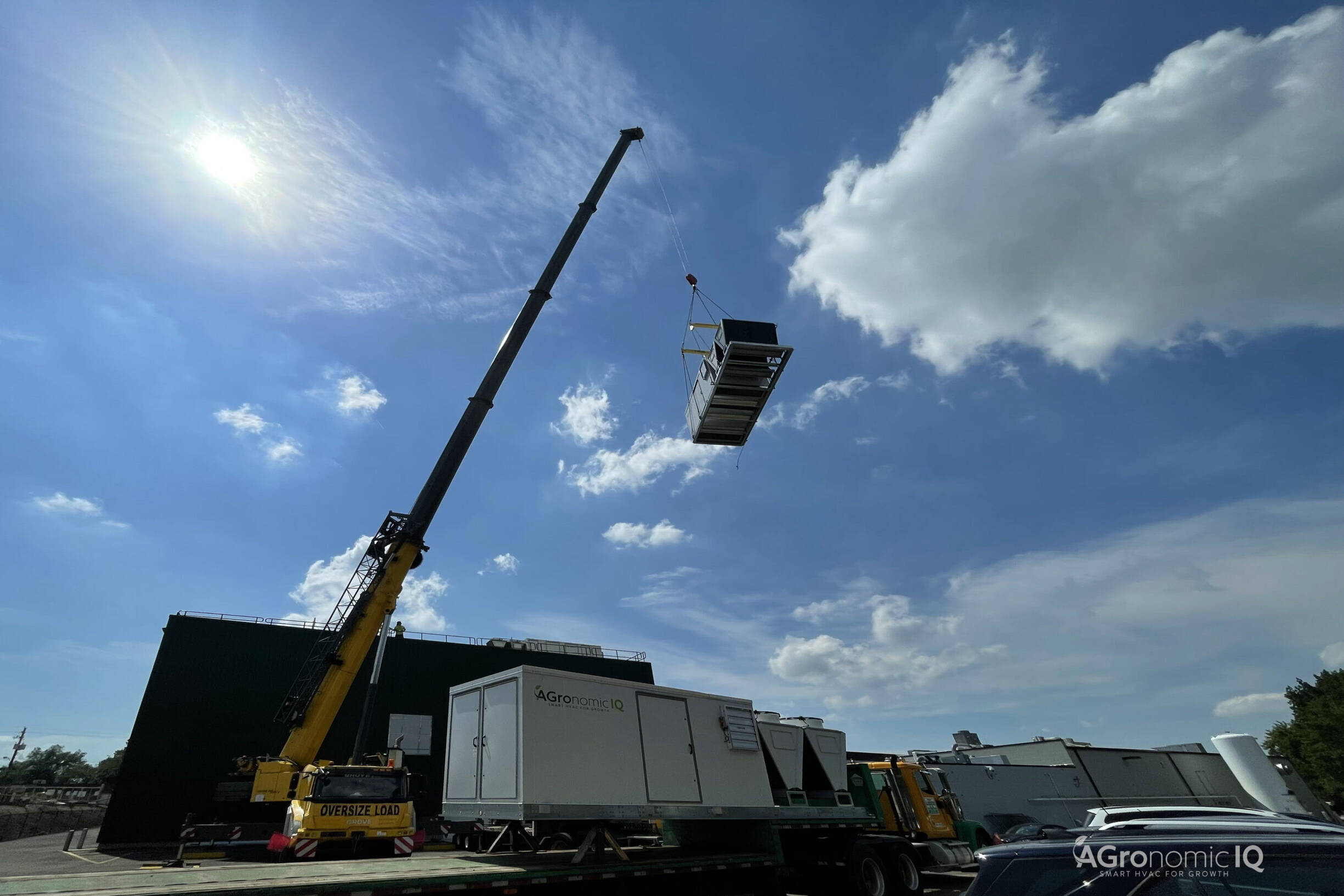

GROW MEDIA
Choosing the right grow media is crucial for promoting optimal plant growth and supporting healthy root development in vertical farming. Options such as coco coir, rockwool, perlite, and hydroponic clay pellets serve as stable substrates, allowing plants to anchor their roots and access essential nutrients and water. These media provide excellent drainage, preventing waterlogging and ensuring proper root zone aeration.
By creating an ideal environment for root growth, the chosen grow media facilitates robust nutrient uptake, efficient water absorption, and overall plant vitality. Selecting the appropriate grow media tailored to your specific crop requirements is a vital step in maximizing the success of your vertical farming endeavors.
Resources
September 27, 2023
Cultivatd AgraME Platinum Sponsor
Cultivatd is proud to be Platinum Sponsor of AgraME 2023, Dubai October 9-10 2023
September 12, 2023
VertiFarm 2023 – Cultivatd will be there! BOOTH 4.F46
Cultivatd will be at VertiFarm vertical farming event on 26–28 September 2023, Messe Dortmund, Germany.
September 7, 2023
Cultivatd Partners With Seasony To Accelerate CEA Adoption Of Mobile Robotics Automation.
Cultivatd expands automation options to increase grower yields with reduced labor costs.
May 29, 2023
Large Scale Vertical Farming
The Reality of Large Scale Vertical Farming - OnePointOne Interview
May 8, 2023
Cultivatd is Attending GreenTech Amsterdam 2023
From June 13-15 2023, Cultivatd will be attending the GreenTech Amsterdam conference event at the RAI Amsterdam Convention…
February 24, 2023
Indoor Farming Reports and Webinars
This collection showcases research reports and webinars prepared by Cultivatd team members to educate and inspire indoor…
February 4, 2023
Understanding The Challenges Facing Lettuce Producers [WEBINAR]
Experts identify challenges facing lettuce producers, discuss factors that influence lettuce prices, and recommend solutions…
Tech Questions?
Want to find the best agtech for your farm? We’re here to help!
